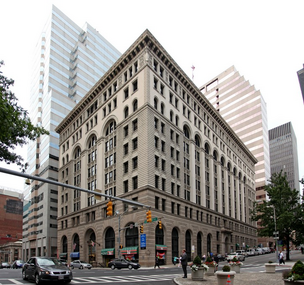I will always advocate for development and project support
to attract development, I am saddened to see something like this take
place. You really cannot fault the developer
in this case as their job is to get it built, profitably, on time and budget. They
simply took what was offered to them. But
you have to question a system, elected officials and municipal planners that create
this situation
The downtown apartment market is so hot right now, the new
owner of the Equitable building said the $7.2 million acquisition would have
happened without the city’s new tax credit for apartment conversions.
Of course, the buyer, Jerry Karlik, and his Chicago-based JK
Equities LLC also got a great deal, paying 28 percent less than the $10 million
asking price for the 10 S. Calvert St. building.
But Karlik said it was the high occupancy in nearby
buildings and Baltimore’s proximity to New York and Washington, D.C., that were
key to purchasing his company’s first property in Baltimore.
“We looked at just about every [apartment] building and saw
occupancy was at 100 percent with waiting lists, so the markets seem to be
trending that way,” he said. “We like the market and we think the market has
lots of upside, especially with everything going on downtown with more adaptive
reuse buildings over the last four years.”
Karlik is something of an old hand at adaptive reuse. His
company got started on the trend toward new urban residential housing in the
early 2000s, converting one of the first obsolete office buildings in Chicago —
a 700,000-square-foot building — to 320 condominiums.
The company specializes in condos, following a strategy of
renovating upper floors for residential units and building first-floor retail.
“What we like to do is keep the retail component and sell
the rest of it,” Karlik said. “But with respect to residential [rentals], we
build, we hold, and we get maximum value.”
The Equitable building was an intriguing property for having
been one of the few structures to survive the Great Baltimore Fire of 1904,
Karlik said. And for a 225,000-square-foot building constructed in 1891, he
said, “the exterior of the building is in excellent shape so there’s very
little work to be done there.”
As in many office conversions, Karlik plans to take the
luxury approach, though it won’t likely be ultra high-end.
“It’s going to be luxury in the sense that we’re planning a
full array of amenities: a full-time doorman, a fitness center, a party room, a
rooftop deck,” Karlik said. “We’re not going to do a bocce court, but we’ll see
what the market demands. We’re doing a market study right now.”
Parking for the 180 units is still an open question. The
acquisition doesn’t include a garage, so Karlik said he is working on deals
with nearby building and garage owners to “offer parking at reasonable prices,
either almost next door or within a half-block.” Karlik isn’t concerned that a
lack of parking will be an issue in renting units.
“Obviously in New York, parking is almost a nuisance.
Baltimore is a little different,” Karlik said. “But being downtown, we think we
have plenty of options to give convenient parking to our tenants. Our tenants
are going to be 25 to 35 years old and we think many will probably use public
transportation.”
Karlik expects to invest $30 million in the property,
including the purchase price, and said the construction will likely begin
“sometime in 2014” with completion in 2015.
“We’re thrilled to be in the market,” Karlik said. “With all
the activity downtown, it’s the beginning of the trend.”
Source: Baltimore
Business Journal

No comments:
Post a Comment